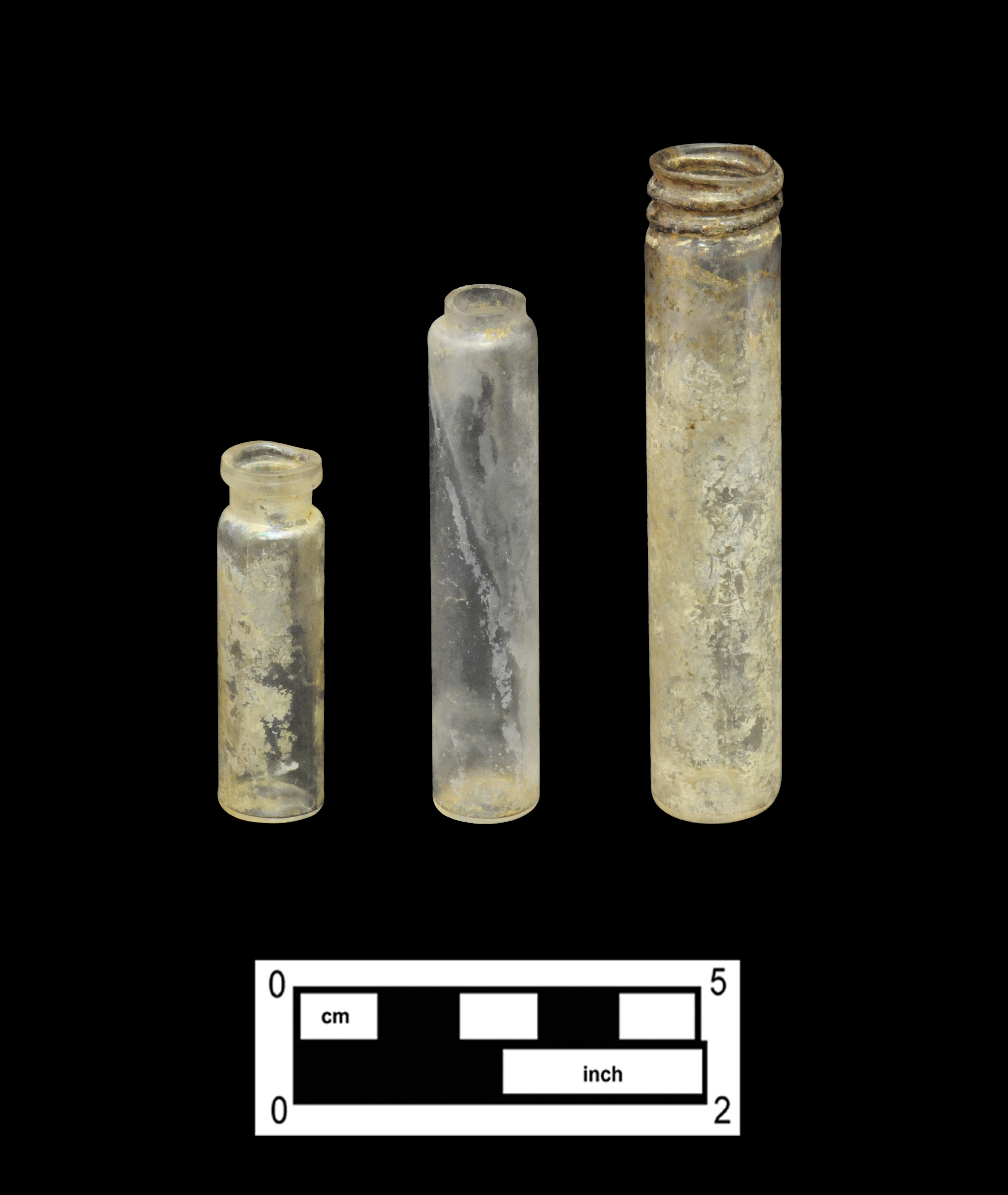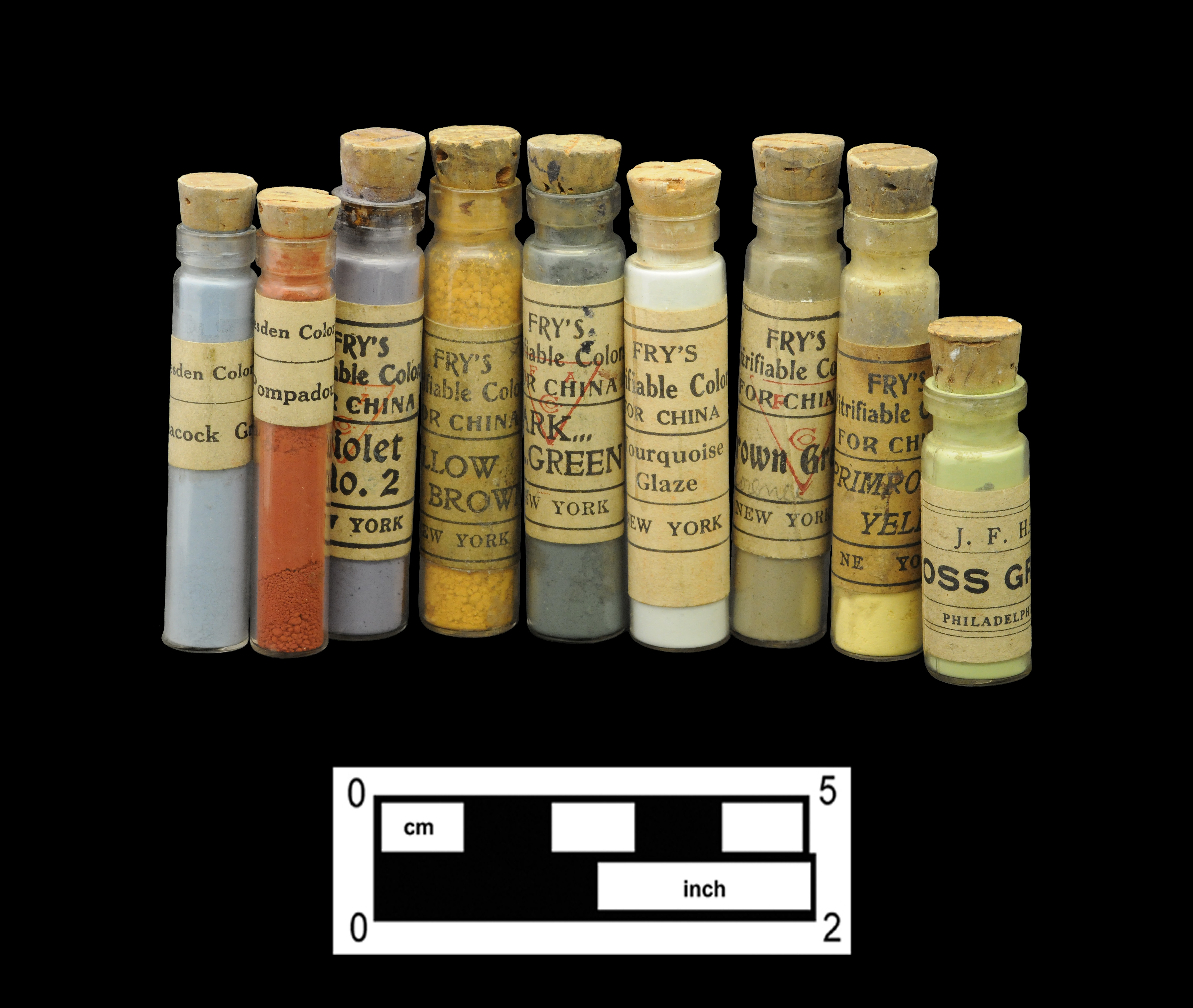Vials

The small vials shown here all likely served to package the final medicinal product as it was distributed for consumer use. The vials at left and center were frequently known as homeopathic vials and typically would have contained very small doses of medicine.
The vial at left (Cat# 8.31.69) appears in the Whitall Tatum glass catalogs as the “Short Style” homeopathic vial, and came standard in “white” and “flint” (both terms for colorless) in 1880 and 1902, respectively—though this form was also available in amber and blue at slightly higher costs. 1 This vial seems to have been produced in either a turn mold or press-and-blow machine, as there is no evidence of mold seams anywhere on the bottle. The finish on this bottle is typical of these homeopathic bottles, and was known to glassmakers as “patent finish.” 2 The vial at center (Cat# 8.30.30), with its straight finish, most closely resembles the “Homeopathic Case Vials” also offered by Whitall Tatum & Company during the last quarter of the nineteenth century. 3 The vial at right features a threaded finish and would have once been sealed by a metal lid (Cat# 8.30.29). The 1902 Whitall Tatum catalog advertised “Screw-neck Tube Vials” for “pills, tablets, etc.” that are virtually identical to the vial shown here and featured nickel-plated caps. 4 The 1880 Whitall Tatum & Company catalog does not include these screw-neck vials, so it seems they were introduced in the last decade or so of the nineteenth century.

Of note is the image shown here depicting contemporary vials from a private collection containing paint pigments. The vial at far right containing the light green pigment is virtually indistinguishable from the “Short Style” homeopathic vial recovered from Feature 1. The others more closely resemble the “Long Style” homeopathic vials, also advertised in the Whitall Tatum catalog. 5 It is obvious then that while these vials were advertised in the glassmakers’ catalogs as “Homeopathic” vials, they were not used solely for medicinal purposes. Without the paper labels that once adorned the Feature 1 vials, we are unable to determine, with any degree of certainty, the products they once contained.
References
- Whitall Tatum & Company, Whitall, Tatum & Co. 1880 (Princeton, NJ: The Pyne Press, 1971), 30; Whitall Tatum & Company, Drug, Perfume & Chemical Bottles 1902 (Chattanooga, TN: Antiques Research Publications, 1967), 29 ↩
- Whitall, Tatum & Co. 1880, 30 ↩
- Whitall, Tatum & Co. 1880, 31; Drug, Perfume & Chemical Bottles 1902, 30 ↩
- Drug, Perfume & Chemical Bottles 1902, 55 ↩
- Whitall, Tatum & Co. 1880, 31; Drug, Perfume & Chemical Bottles 1902, 30 ↩